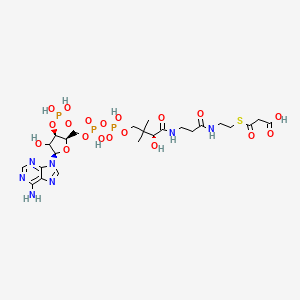| MeSH term | MeSH ID | Detail |
|---|---|---|
| Diabetes Mellitus | D003920 | 90 associated lipids |
| Insulin Resistance | D007333 | 99 associated lipids |
| Weight Gain | D015430 | 101 associated lipids |
| Hypertension | D006973 | 115 associated lipids |
| Prostatic Neoplasms | D011471 | 126 associated lipids |
| Adenocarcinoma | D000230 | 166 associated lipids |
| Body Weight | D001835 | 333 associated lipids |
Lmfa07050031
Lmfa07050031 is a lipid of Fatty Acyls (FA) class. The involved functions are known as Pigment and Polymerization. The related lipids are Propionate.
Cross Reference
Introduction
To understand associated biological information of Lmfa07050031, we collected biological information of abnormalities, associated pathways, cellular/molecular locations, biological functions, related genes/proteins, lipids and common seen animal/experimental models with organized paragraphs from literatures.
What diseases are associated with Lmfa07050031?
There are no associated biomedical information in the current reference collection.
Possible diseases from mapped MeSH terms on references
We collected disease MeSH terms mapped to the references associated with Lmfa07050031
PubChem Associated disorders and diseases
What pathways are associated with Lmfa07050031
There are no associated biomedical information in the current reference collection.
PubChem Biomolecular Interactions and Pathways
Link to PubChem Biomolecular Interactions and PathwaysWhat cellular locations are associated with Lmfa07050031?
There are no associated biomedical information in the current reference collection.
What functions are associated with Lmfa07050031?
Related references are published most in these journals:
| Function | Cross reference | Weighted score | Related literatures |
|---|
What lipids are associated with Lmfa07050031?
Related references are published most in these journals:
| Lipid concept | Cross reference | Weighted score | Related literatures |
|---|
What genes are associated with Lmfa07050031?
There are no associated biomedical information in the current reference collection.
What common seen animal models are associated with Lmfa07050031?
There are no associated biomedical information in the current reference collection.
NCBI Entrez Crosslinks
All references with Lmfa07050031
Download all related citations| Authors | Title | Published | Journal | PubMed Link |
|---|---|---|---|---|
| Bezaire V et al. | Regulation of CPT I activity in intermyofibrillar and subsarcolemmal mitochondria from human and rat skeletal muscle. | 2004 | Am. J. Physiol. Endocrinol. Metab. | pmid:12954596 |
| Collier CA et al. | Metformin counters the insulin-induced suppression of fatty acid oxidation and stimulation of triacylglycerol storage in rodent skeletal muscle. | 2006 | Am. J. Physiol. Endocrinol. Metab. | pmid:16478780 |
| Kuhl JE et al. | Exercise training decreases the concentration of malonyl-CoA and increases the expression and activity of malonyl-CoA decarboxylase in human muscle. | 2006 | Am. J. Physiol. Endocrinol. Metab. | pmid:16434556 |
| Miura S et al. | Marked phenotypic differences of endurance performance and exercise-induced oxygen consumption between AMPK and LKB1 deficiency in mouse skeletal muscle: changes occurring in the diaphragm. | 2013 | Am. J. Physiol. Endocrinol. Metab. | pmid:23695215 |
| Saha AK et al. | Cytosolic citrate and malonyl-CoA regulation in rat muscle in vivo. | 1999 | Am. J. Physiol. | pmid:10362615 |
| Winder WW et al. | Time course of exercise-induced decline in malonyl-CoA in different muscle types. | 1990 | Am. J. Physiol. | pmid:2166437 |
| Rodnick KJ and Sidell BD | Cold acclimation increases carnitine palmitoyltransferase I activity in oxidative muscle of striped bass. | 1994 | Am. J. Physiol. | pmid:8141397 |
| Winder WW and Hardie DG | Inactivation of acetyl-CoA carboxylase and activation of AMP-activated protein kinase in muscle during exercise. | 1996 | Am. J. Physiol. | pmid:8779952 |
| Laybutt DR et al. | Muscle lipid accumulation and protein kinase C activation in the insulin-resistant chronically glucose-infused rat. | 1999 | Am. J. Physiol. | pmid:10600797 |
| Hutber CA et al. | Electrical stimulation inactivates muscle acetyl-CoA carboxylase and increases AMP-activated protein kinase. | 1997 | Am. J. Physiol. | pmid:9124333 |
